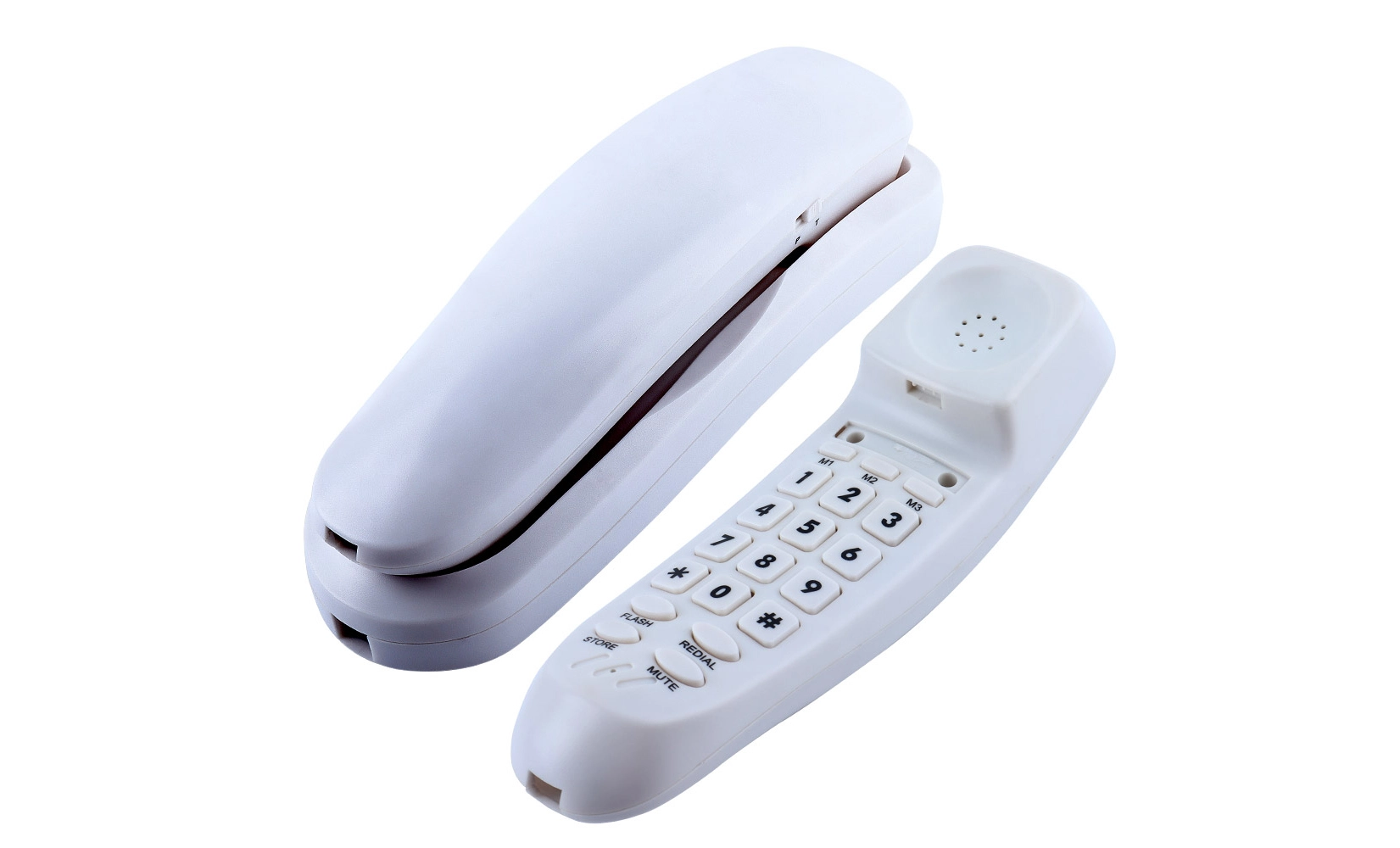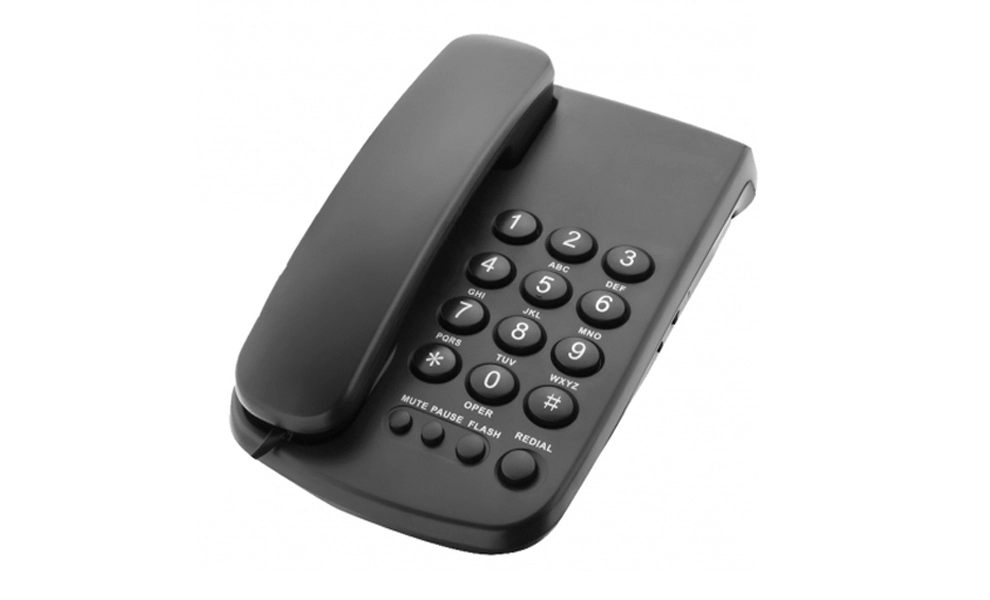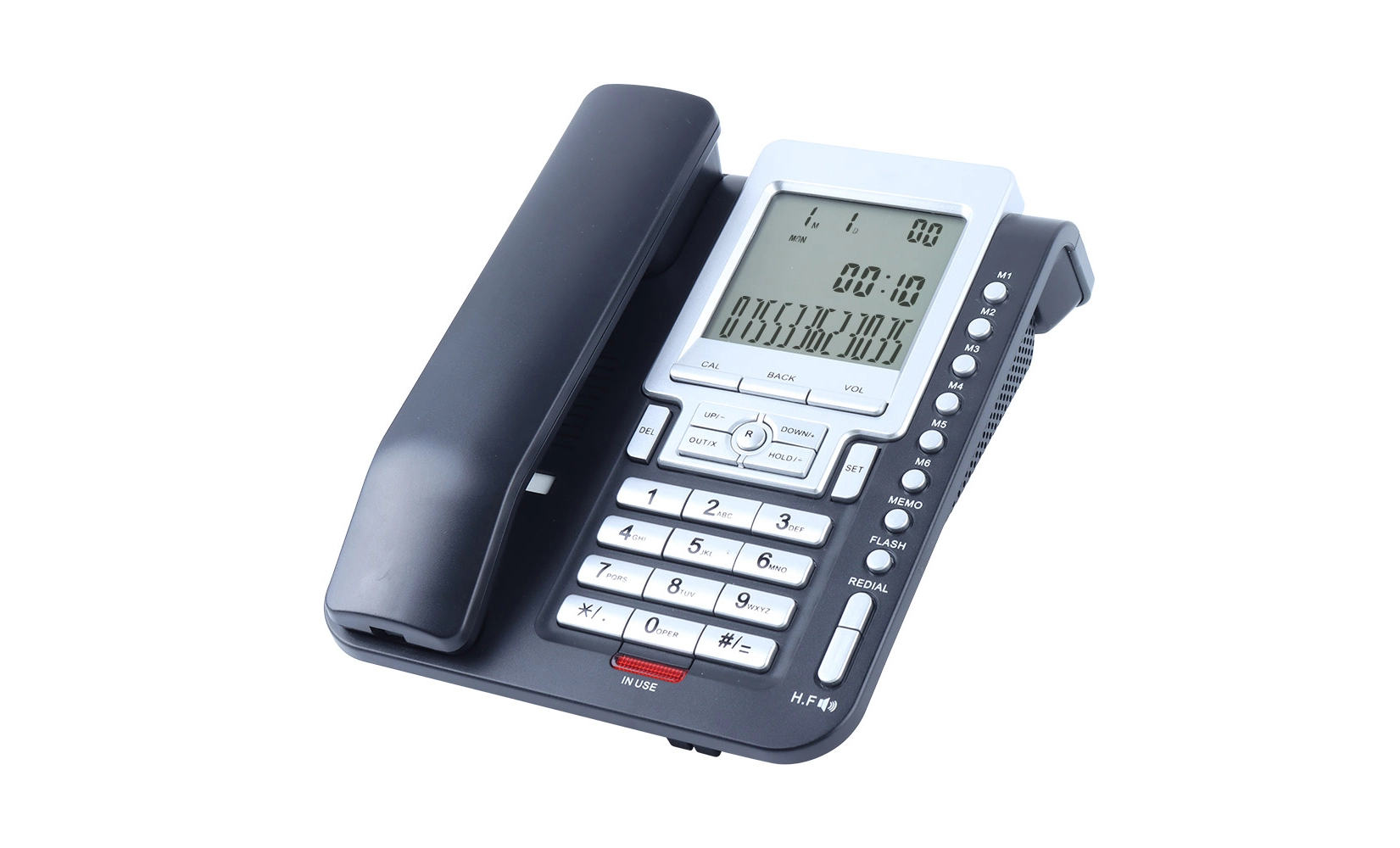The Evolution and Advantages of Trimline Telephones in Public Spaces
Trimline telephones have come a long way since their inception in the 1960s. Originally designed for home use, these sleek and compact phones have found a new purpose in public spaces due to their durability and space-saving design. The evolution of trimline phones has led to models specifically engineered for public use, incorporating features that make them ideal for high-traffic areas.
Historical Context of Trimline Phones
The trimline telephone was first introduced by Western Electric in 1965 as a revolutionary design that integrated the dial or keypad into the handset. This innovative approach allowed for a more streamlined appearance and improved ergonomics. Over time, manufacturers recognized the potential of this design for public use and began adapting trimline phones to meet the demands of various public environments.
Key Advantages for Public Spaces
Trimline wall phones offer several benefits that make them particularly suitable for public spaces:
- Space-Efficiency: The compact design of trimline phones allows for installation in areas where space is at a premium, such as narrow hallways or small alcoves.
- Durability: Modern trimline phones for public use are constructed with robust materials that can withstand impacts, temperature fluctuations, and frequent handling.
- Easy Maintenance: The simplified design of trimline phones means fewer components that can malfunction, reducing maintenance requirements and downtime.
- Accessibility: Wall-mounted trimline phones can be installed at various heights to accommodate users with different needs, including those in wheelchairs.
- Clear Communication: Despite their compact size, many trimline phones are equipped with high-quality audio components to ensure clear conversations even in noisy environments.
These advantages have made trimline telephones a popular choice for facility managers and public space designers looking to provide reliable communication options without compromising on space or aesthetics.
Design Features and Durability Enhancements in Modern Trimline Wall Phones
Modern trimline wall phones have undergone significant enhancements to meet the demanding requirements of public spaces. Manufacturers have focused on incorporating design features and durability improvements that ensure these phones can withstand the rigors of constant use while maintaining functionality and appearance.
Robust Construction Materials
The materials used in constructing trimline wall phones for public spaces have evolved to prioritize durability:
- High-Impact Plastics: Many trimline phones now use polycarbonate or other high-impact plastics that resist cracking and shattering upon impact.
- Metal Reinforcements: Critical components, such as the wall mount bracket and internal structure, often incorporate metal reinforcements for added strength.
- Scratch-Resistant Surfaces: The exterior surfaces of modern trimline phones are treated with scratch-resistant coatings to maintain their appearance over time.
Weatherproofing and Environmental Resistance
For trimline phones installed in outdoor or semi-outdoor locations, weatherproofing features are crucial:
- Sealed Keypads: Membrane keypads or sealed buttons prevent moisture and dust ingress, ensuring continued functionality in various weather conditions.
- Moisture-Resistant Components: Internal components are often treated or designed to resist moisture, preventing corrosion and electrical shorts.
- UV-Resistant Materials: Phones exposed to sunlight are constructed with UV-resistant materials to prevent fading and degradation of the plastic housing.
Vandal-Resistant Design Elements
Public phones are often targets for vandalism, so modern trimline models incorporate several anti-vandal features:
- Armored Cord: The handset cord is typically reinforced with a steel core or wrapped in a durable, cut-resistant sheath.
- Tamper-Resistant Screws: Special screws that require proprietary tools for removal help prevent unauthorized access to the phone's internal components.
- Robust Handset: The handset itself is designed to withstand drops and impacts, often featuring a one-piece construction to eliminate weak points.
User-Friendly Features for Public Use
While durability is paramount, modern trimline telephones also incorporate features that enhance usability in public settings:
- Large, Tactile Buttons: Oversized buttons with clear markings and tactile feedback make dialing easier for all users, including those with visual or motor impairments.
- Volume Control: Many models include adjustable volume settings to accommodate users with hearing difficulties or to compensate for noisy environments.
- Braille Labeling: Essential buttons and instructions are often labeled with Braille to assist visually impaired users.
- Hearing Aid Compatibility: Most public trimline phones are designed to be compatible with hearing aids, ensuring clear communication for all users.
These design features and durability enhancements have transformed trimline wall phones into robust communication tools capable of withstanding the demands of public use while remaining accessible and functional for a diverse range of users.
Applications and Installation Considerations for Trimline Phones in Various Public Settings
Trimline wall phones find applications in a wide array of public settings, each with its unique requirements and installation considerations. Understanding these factors is crucial for facility managers and installers to ensure optimal placement and functionality of these communication devices.
Common Public Applications
Trimline phones are versatile communication tools that can be found in various public spaces:
- Healthcare Facilities: In hospitals and clinics, trimline phones are often installed in patient rooms, waiting areas, and emergency call stations.
- Educational Institutions: Schools and universities use trimline phones in classrooms, dormitories, and administrative offices for internal communication and emergency purposes.
- Transportation Hubs: Airports, train stations, and bus terminals often have trimline phones available for public use, providing travelers with a means to make calls or contact assistance.
- Government Buildings: Courthouses, municipal offices, and other government facilities utilize trimline phones for visitor communication and internal use.
- Correctional Facilities: Prisons and detention centers employ specialized trimline phones for inmate communication, designed with additional security features.
- Hotels and Hospitality: Trimline phones are commonly found in hotel rooms and public areas, offering guests a reliable communication option.
Installation Considerations
When installing trimline wall phones in public spaces, several factors must be taken into account:
- Accessibility Compliance: Phones must be installed at heights that comply with ADA (Americans with Disabilities Act) regulations, typically between 48 and 54 inches from the floor to the operable parts of the phone.
- Network Connectivity: Ensure proper telephone line or VoIP connectivity is available at the installation site, with consideration for future upgrades or changes in technology.
- Power Requirements: Some advanced trimline telephones may require a power source for features like display lighting or amplification. Plan for nearby electrical outlets or Power over Ethernet (PoE) capabilities.
- Environmental Factors: Consider the specific environmental challenges of each location, such as temperature fluctuations, humidity, or exposure to direct sunlight, and choose phone models accordingly.
- Signage and Visibility: Install clear signage to indicate the presence and purpose of the phone, especially in emergency or courtesy phone applications.
- Security Considerations: In high-risk areas, consider additional security measures such as surveillance cameras or protective enclosures for the phones.
Maintenance and Upkeep
Regular maintenance is essential to ensure the longevity and functionality of trimline phones in public spaces:
- Cleaning Protocols: Establish regular cleaning schedules using appropriate, non-abrasive cleaners to maintain hygiene and prevent the spread of germs.
- Functional Testing: Conduct periodic tests to ensure all phones are operational, with clear audio quality and proper connectivity.
- Repair and Replacement: Have a system in place for quick repair or replacement of damaged units to minimize downtime.
- Software Updates: For digital or VoIP-enabled trimline phones, ensure that software and firmware are regularly updated to maintain security and functionality.
By carefully considering these applications and installation factors, facility managers can effectively deploy trimline wall phones to enhance communication capabilities in various public settings while ensuring longevity and reliable operation.
Conclusion
Trimline wall phones have proven to be invaluable communication tools in public spaces, offering a perfect blend of durability, functionality, and space-efficiency. Their evolution from residential devices to robust public communication solutions demonstrates the adaptability and enduring relevance of this design. With enhanced features for durability, accessibility, and ease of use, modern trimline telephones continue to meet the diverse needs of public spaces across various sectors.
As technology advances, trimline phones are likely to incorporate more sophisticated features while maintaining their core strengths of reliability and simplicity. For facility managers and public space designers, these phones remain an essential consideration in creating accessible, functional, and safe environments for communication. By understanding the unique advantages, design features, and installation considerations of trimline wall phones, decision-makers can make informed choices that benefit both the users and the spaces they serve.
Rugged trimline telephones for public safety zones | CHEETA
Shenzhen Cheeta Technology Co., Ltd. stands out as a leading manufacturer of rugged trimline telephones ideal for public safety zones. With 18+ years of OEM/ODM expertise, our 1,200㎡ factory boasts 100+ skilled workers and 10 senior engineers, enabling a daily production capacity of 1,000 analog units. Our products adhere to CE and ROHS standards, undergoing 11 rigorous inspection steps to ensure reliability, resulting in an industry-leading failure rate below 1%.
CHEETA's commitment to innovation is evident through weekly design sessions and global case studies, allowing us to quickly adapt to customer needs. Our trimline phones feature practical layouts, space-saving designs, and enhanced functionality, making them perfect for various public environments. For more information about our telephone products, please contact us at allen@cheeta.com.cn.





